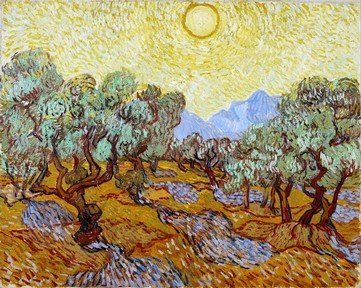Quiz Answer Key and Fun Facts
1. The first photo shows a detail of Ambrogio Lorenzetti's monumental fresco known as "The Allegory of Good and Bad Government", one of the earliest examples in Western art depicting various aspects of city life - such as shops and financial transactions. In which Italian city - known for its magnificent Gothic cathedral and Palio horse race - would you find this masterpiece of medieval painting?
2. Part of Masaccio's groundbreaking fresco cycle in Florence's Brancacci Chapel, "The Tribute Money" depicts a scene from the Gospel of Matthew. In the painting, which of the apostles (who went on to became the first of a long list of influential figures) is instructed by Jesus to find a coin in the mouth of a fish in order to pay the temple tax?
3. One of the undisputed masterpieces of the Early Netherlandish style, "The Money Changer and His Wife" by Flemish painter Quentin Matsys - the founder of the Antwerp school - depicts a couple of well-to-do burghers in a meticulously detailed domestic interior. In which modern-day country would you find Antwerp?
4. Painted in 1532, this stunning portrait by Hans Holbein the Younger depicts Hanseatic merchant Georg Giese, surrounded by the tools of his trade. With what English monarch was Holbein associated for a number of years?
5. This striking work of art is one of many painted by El Greco, one of the foremost Mannerist artists, on which episode of the Gospel, relevant to this quiz's topic?
6. In this celebrated painting, the future apostle and Gospel writer Matthew is shown in the moment of being called by Jesus while at his job as a tax collector. What seminal Baroque artist created this masterpiece?
7. This satirical painting by Dutch artist Jan Brueghel the Younger makes fun of the first known speculative bubble in history, which involved what popular flowers?
8. The South Sea Bubble of 1720 was another financial event that left its mark on cultural history. Though this painting was made over a century later by Victorian painter and illustrator Edward Matthew Ward, it was inspired by which influential 18th-century artist - known for the often biting social criticism of his work?
9. This colourful print by Utagawa Sadahide portrays foreign traders in one of the treaty ports designated by the Japanese government to allow foreigners to live and work in the Empire. In which large city, one of East Asia's major seaports, does the scene take place?
10. This 1881 painting by Florentine artist Telemaco Signorini, titled "Antica Via del Fuoco" (Old Fire Alley), shows a street in Florence's market district where coal was sold. Signorini was one of the Macchiaioli, an artistic movement that is considered a forerunner of which much more famous movement that developed a few years later in one of Italy's neighbouring countries?
Source: Author
LadyNym
This quiz was reviewed by FunTrivia editor
ponycargirl before going online.
Any errors found in FunTrivia content are routinely corrected through our feedback system.
